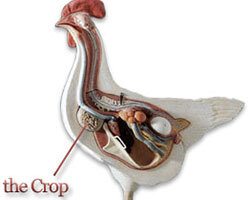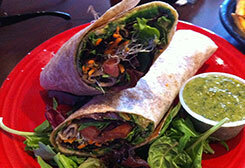
Many Methods & Endless Reasons to Sprout
We do have a long, long history of eating plants and seeds are dense, but well-defended plant food.
So, how to get past the deliberate poisonous nature of how plants defend their babies, and get to the great proteins, fats and minerals within?
Easy, we let nature take its course.
The Wonder of Seeds
The health conscious are beset on all sides with models of how best to eat. Conclusions based on everything from pH balance to complete-protein content, remineralising juices to distilled water. It is usually confusing and often contradictory. But few foods tick more boxes across more fields of thought than sprouts.
Loaded with life-giving energy, naturally mineral-rich, full of detoxifying chlorophyll, colon-healthy fibre, native moisture content, high in antioxidants, alive with enzymes, and packed with all the amino acids your body needs to build complete proteins. - for pennies everyday.
They are, after all a seed - an entire plant packed into a suitcase, and have had all their protective mechanisms washed away. Leaving behind pure, undefended nutrition, partially unpacked. And you don't need a garden to grow greens, just a window sill will do. Seeds on the whole are considered one of nature's superfoods across the whole planet. They contain a massive nutritional spectrum, and have long been used by developing civilisations as a means of promoting health and strength.
Because they naturally store well and are easily transportable, as well as filling, many of them have been associated with the act of civilisation itself, and even empire-building. 'An army marches on its stomach' usually refers to grains, and their ability to sustain troops on the move, without having to lug much about !
THE STAFF OF LIFE
However, a few seeds have come to dominate this field, that may not be the best examples, namely; wheat and rice. Despite being thought of as a healthy food, it is usually only a statistical comparison to excess meat consumption that gives them this health edge. It is notable that these seeds are cooked in order to be eaten, and so they can hardly be hailed as a natural food for human beings. Try eating them raw, and you'll see why. So we'll have a look at some others, once we understand the principles.
Guarded Treasure
The fact that seeds are the most nutrition-dense part of plants leads us to a curious anomaly. If they are such perfect foods, then why don't many other animals specialise on them? Throughout the whole of evolution, only a handful of animals have learned to eat them well. Because they are very well protected - usually involving very toxic chemicals or clever biomimicry. All seeds are covered in enzyme-inhibitors that act as a timing device so that the seed knows when to sprout. There is no point falling from the mother plant in late autumn and rising up to meet the falling sun. Thus, these inhibitors are made water-soluble, and once they are washed away by thawing winter ice, and soaked in spring rain, the seed can burst into life, uninhibited.
Because the plants don't want us to eat their babies, they have spent billions of years dreaming up adaptations to these inhibitors, and developed them into all manner of trickery to mess with the animal that tries to eat them. Everything from digestive difficulty (literally inhibiting the action of digestive enzymes) to endocrine disruption (growth and fertility problems).
Learning from Evolution
Certain small mammals have learned, over the course of evolution, to neutralise these chemicals, but birds are notable in that they deal with these antagonistic compounds in a way we can learn from them.
Between a bird's mouth and its stomach there sits a pouch called a 'crop'. Once swallowed, seeds remain in this warm, moist environment for some time. As the water-soluble inhibitors melt away, it fools the seed into thinking that it is time to sprout, and it begins unpacking its suitcase.
Once that is done, the seed then continues its journey into the bird's stomach for actual digestion to begin.
This can now happen uninhibited, as all the defenses that mess with digestion have been dissolved and washed away.
Shooting Forth
In sprouting seeds, we first of all leave them to soak for some time first - just like the bird. You'll notice how the soak water changes colour during this time. These are the inhibitors and other problematic chemicals dissolving into the water. Thus we want to pour that water away, and even give them a good rinse at this stage to lose as much of it as possible.
From then on it is just a matter of letting nature take her course. For this she requires little water, but much oxygen, so keeping the seeds slightly damp (but not soaking wet anymore) allows the seed to hydrate, expand and generally unwrap itself.
As it unpacks its suitcase of firmly bound nutrients, its bioavailability massively increases, and we get access to much more.
The dense stored proteins are being divided up into their component amino acids - saving your stomach all the mess and expense of splitting them with acids and peptides.
Most long carbohydrates (starches) are dismantled into simple sugars to fuel this process, and are easily consumed by beneficial bowel bacteria or drawn into the blood to fuel you directly.
The shoot that has formed is a great source of fibre that keeps the intestines chugging along.
If the sprout has been left long enough to form leaves, then a healthy does of sunlight will turn those first leaves green, activating the chlorophyll within, and charging them with the sun energy that only plants can deliver to us.
This process of life unfurling is evidence of enzymes in action - something no life can exist without, and when they are fresh out of the shell like these, these enzymes are at their most active.
Plus all that water that made its way into the seed has been purified and vitalised by the sprout, and will be gently released as it makes its way through your body.
And they're Cheaper than chips
So, if you're looking for perfect nutrition, high-fibre, low-cost, living foods, there is not much that can beat sprouts.
There are numerous methods for sprouting seeds according to the type of seed used.
The following ‘Jar Method’ is the most simple, but you can also buy sprouting stacks which are quite cheap.
Different seeds require different environments. Before you start, give the seeds a wash and remove any obvious chaff and broken seeds.
Jam Jar Method
Pour them into a jam jar, cover with a loose weave cloth (muslin, net curtain, etc.) and fix with an elastic band around the neck of the jar. Soak the seeds in water for about 8 hours or over night. You may need to increase soaking time by a few hours if it is especially cold.
In the morning
Overturn the jar so that all the water runs out (note its discolouration), while the cloth retains the seeds safely in the jar. Fill the jar with water once more, and pour off the excess again, effectively rinsing them thoroughly.
This has washed away many of the anti-nutrients, as well as the all-important enzyme inhibiters, which will now allow the seed to start unpacking its suitcase and become a sprout instead.
Leave the jar overturned for the next 24 hours so that the rest of the water can drain away. This will allow air to replace the water, while keeping the seeds slightly damp – perfect conditions for sprouting.
Ongoing
For seeds to germinate or "sprout", they need moisture, warmth, and room to expand. As the seeds germinate, chemical changes occur, and they ‘breathe’, requiring oxygen, and releasing carbon dioxide and other gases, as well as waste products, and heat. Rinsing sprouts daily with cool water will prevent them from drying out, and wash away the accumulation of their byproducts, as well as any moulds that would inhabit them at this stage. Keep them at room temperature, and out of direct sunlight.
Each morning rinse them once again, to provide a little moisture, and keep them overturned on a draining surface to allow further free flow of water.
Within a few days, you will have a jar full of raw, fresh, enzyme-rich, fibre-full sprouts for the price of a few pennies. These are the perfect base for salads, nori rolls, sandwich fillings, etc.
The general equation for sprouting says the larger the seed, the longer and more ropy the root, so sprout for less time. IE: Alfalfa are fine to leave right into the leave stage, but almonds or chickpeas quickly become woody and inedible.
Here's a quick chart to get you going, or there's always other people to make them for you.
SkySprouts - from Devon
Filling Nori Rolls
Light wraps
The base of all salads










